If you’ve been following me for a while, you know that I’ve kept all my seed packets in ammo cans since almost the beginning. They were surplus cans given to me by a friend in the Coast Guard, and I found them ideal for seed storage: airtight, watertight, and just the right size to hold packets, envelopes, and little bags of seeds.
Read more: How I store garden seeds for longevity
At first, I organized all my seeds by plant family, with each ammo can holding two or three families (such as brassicas and legumes). Each family was then further grouped inside (using cardboard dividers) by plant type, such as kale, cabbage, mustard, and so on in the brassica family.
Sometimes I succeeded in keeping my seed packets alphabetized or sorted with the oldest seeds in front, but more often than not, they were just dropped into their group—in any order—the more seeds I accumulated.
Over time, as my collection grew from dozens of seed packets to hundreds of packets, this system got a little messy. I couldn’t easily find what I already had without going into the garage, where the ammo cans lived, flipping through the dividers and checking the back of each packet for their packing date. And if I needed to order new seed, I had to drag all the cans upstairs to my office, where my computer was, so I wouldn’t accidentally double up on seeds.
I had to find a better way
Enter: the spreadsheet.
I love using spreadsheets, but even more so, I love using Airtable, which has been indispensable in my business. It’s a free, cloud-based platform that’s like a cross of a spreadsheet with a database, and it allows me to store and organize all kinds of data in visually appealing ways.
I ended up creating a seed inventory spreadsheet (one for vegetables and herbs, and one for flowers) that lets me see at a glance what I have, how old it is, how much is left, and where it came from.
In the main view of my spreadsheet, I have the variety, type of plant, color, stock level, packing date, and seed source. I type in the variety name, but all the rest of the columns are dropdowns from which I can select the appropriate options.
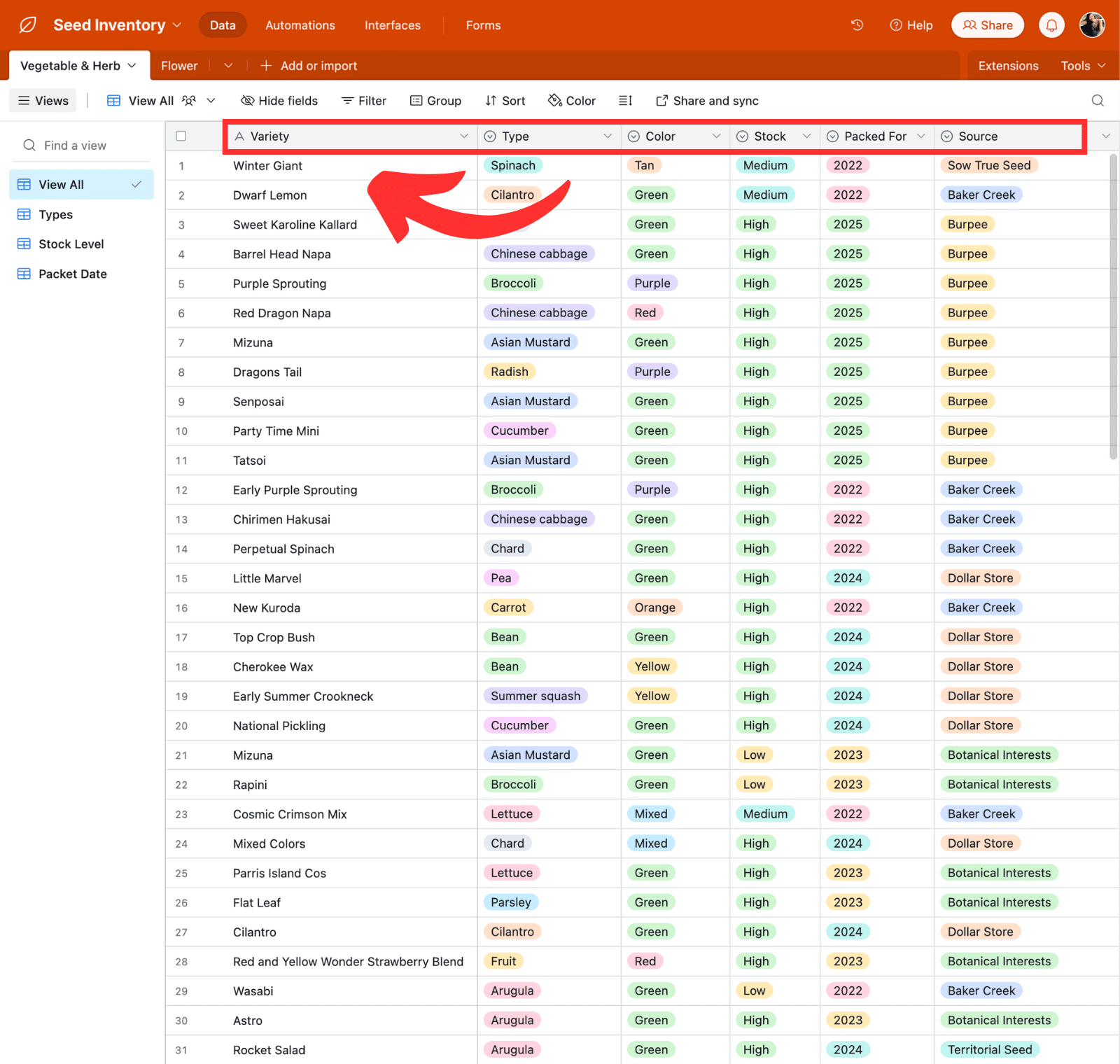
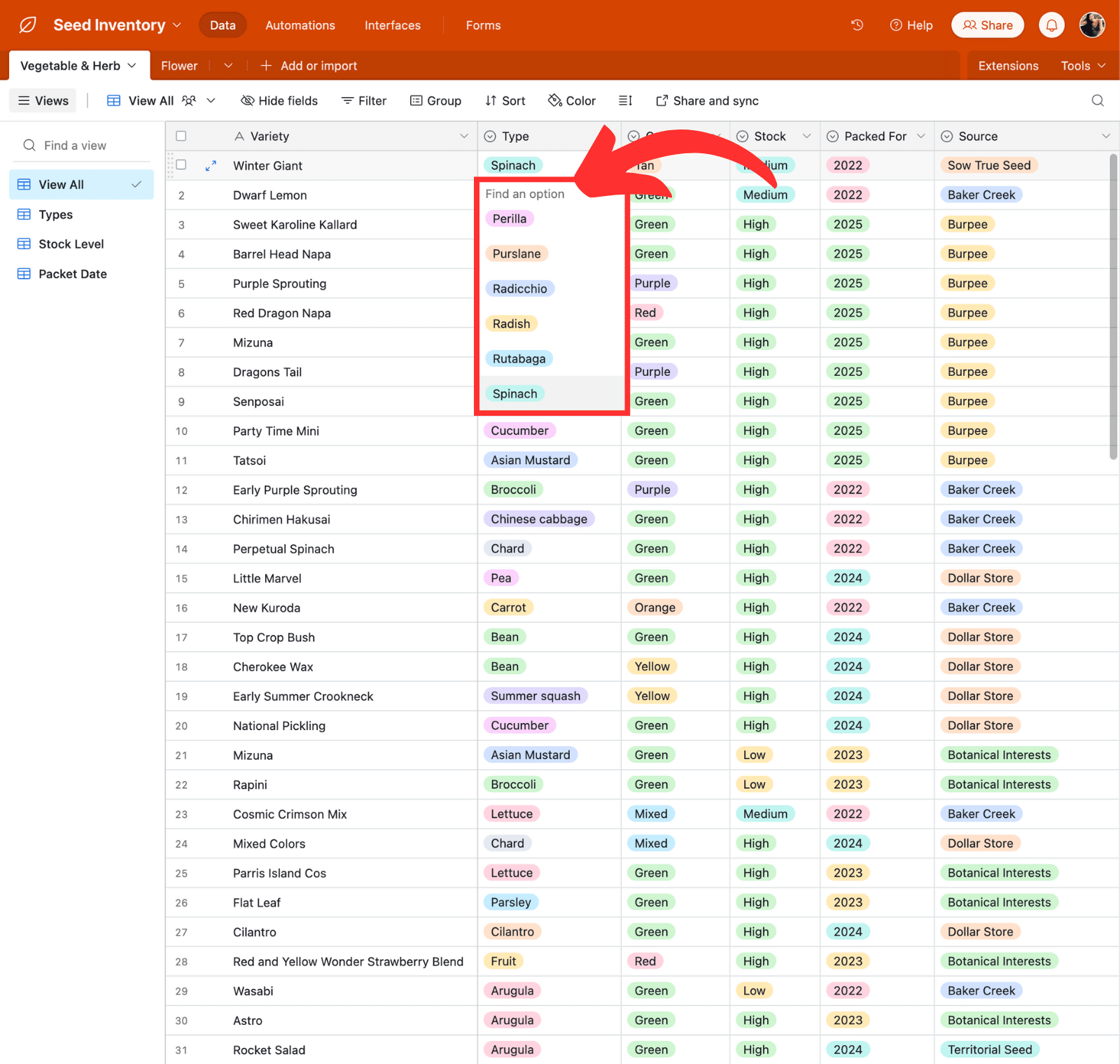
In the “Type” column, there are nearly 60 different types of vegetables and herbs I can select; the “Color” field contains 13 color options; and the “Source” column contains 36 vendors.
I made a few different “views,” as Airtable calls them, which are basically different ways of grouping the data I want to see.
For example, I can click on “Types” to sort the spreadsheet by plant type, or click on “Packet Date” to sort the seeds by year. I can also sort by stock level, which gives me an instant view of what I’m running low on. This is the type of information I always need when I’m about to order more seed for the year.
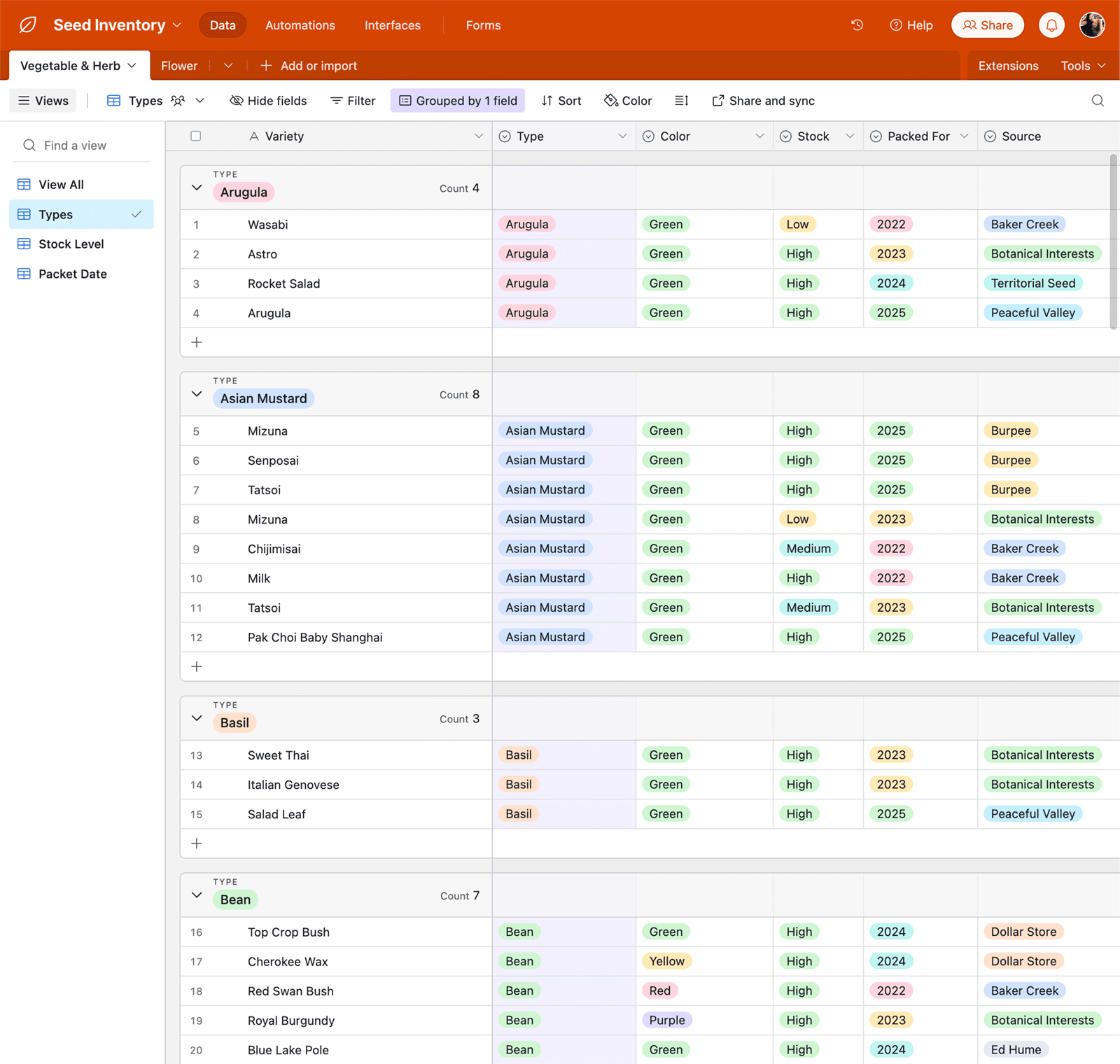
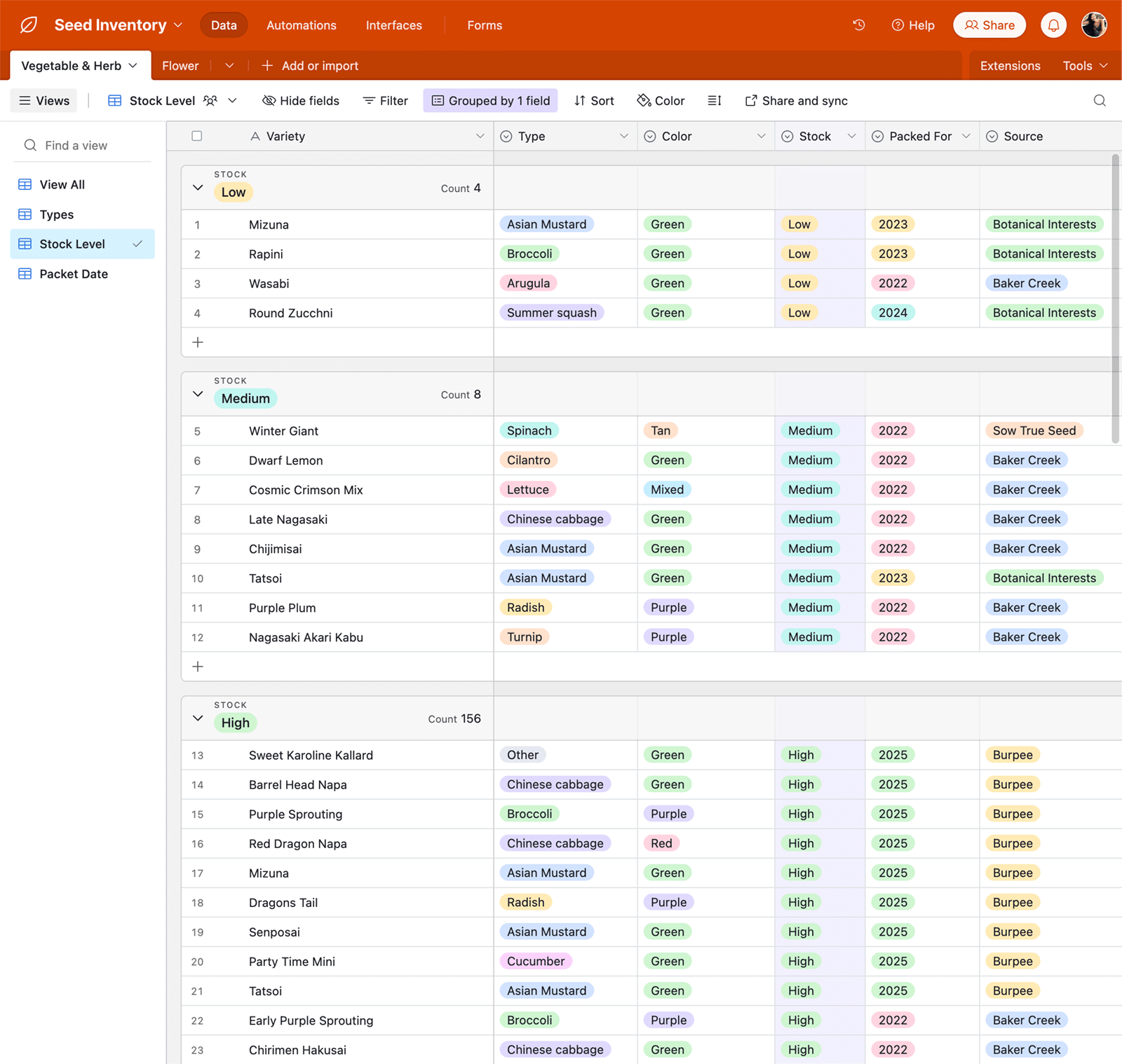
My flower spreadsheet is similar, only it has 46 different types of flowers to select and an “ornamental” or “edible” status that helps me group all my cultivars with a single click.
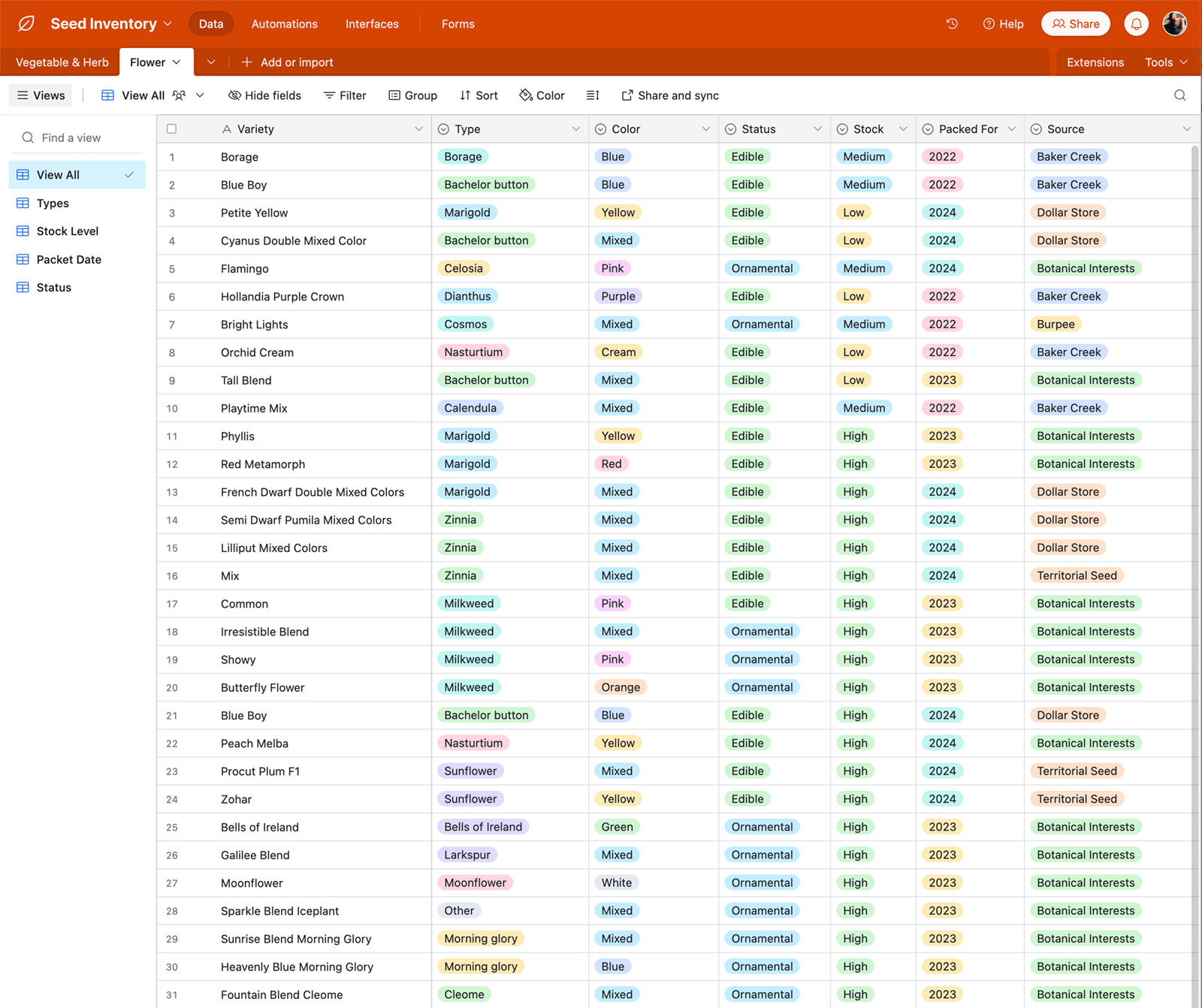
I’m blown away by how immensely helpful this spreadsheet has been this season as I do my seed inventorying and buying! The inventorying alone used to be a very manual process that required me to spread all my packets out on the floor and check them one by one. (I won’t deny that it was oddly exciting and even therapeutic to do every winter/spring, but it was also very time-consuming.)
Now, I can just pull up my spreadsheets to view the details I need without digging through my storage containers. It’s saved me from making impulse buys at the store, since I can look up my data (by logging into my Airtable account on my phone or using the mobile app) in less than a minute.
And best of all, it’s super easy to keep an updated inventory of my 350-plus seed packets. Every time a new package arrives from a vendor, I take a few minutes to enter seed information into the spreadsheet before putting it away.
It goes fast once I get started, since all my dropdown options are already defined. I use the arrow keys and just type in the first couple letters of each option to populate each field in Airtable, all without clicking and scrolling through the dropdown menus.
So what do the ammo cans look like?
I organize my ammo cans a bit differently now, as I no longer categorize seeds by plant family.
Currently, I store my seeds in three cans. Two of them are labeled “A to L” and “M to Z.”
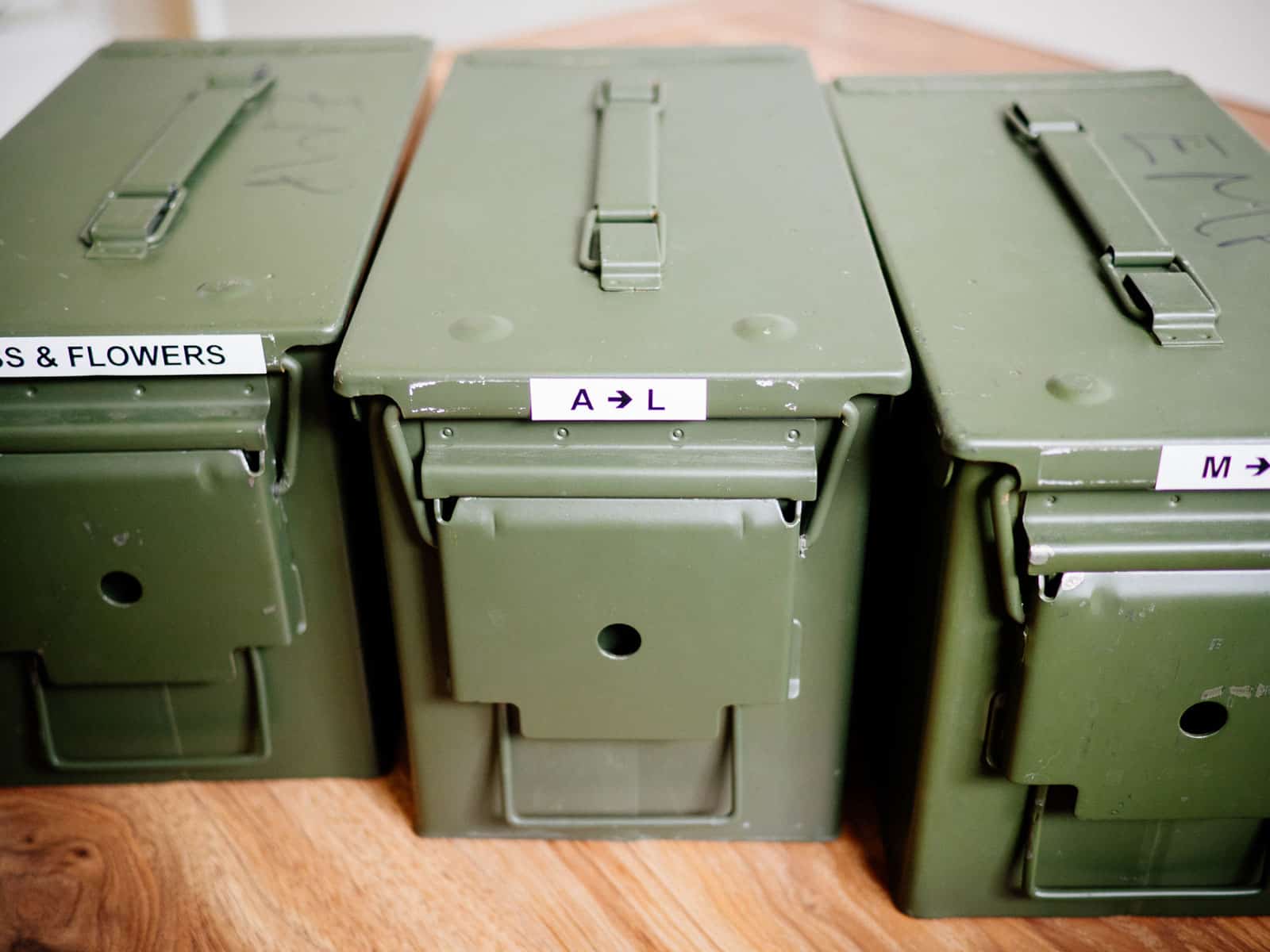
Inside each can, I separate my vegetable seeds by plant type (arugula, broccoli, carrots, lettuce, radishes, tomatoes, and so on) in alphabetical order. They pretty much match the plant types listed in my spreadsheet. Once I enter new seeds into my spreadsheet, I just drop them into the section of the ammo can they need to go in.
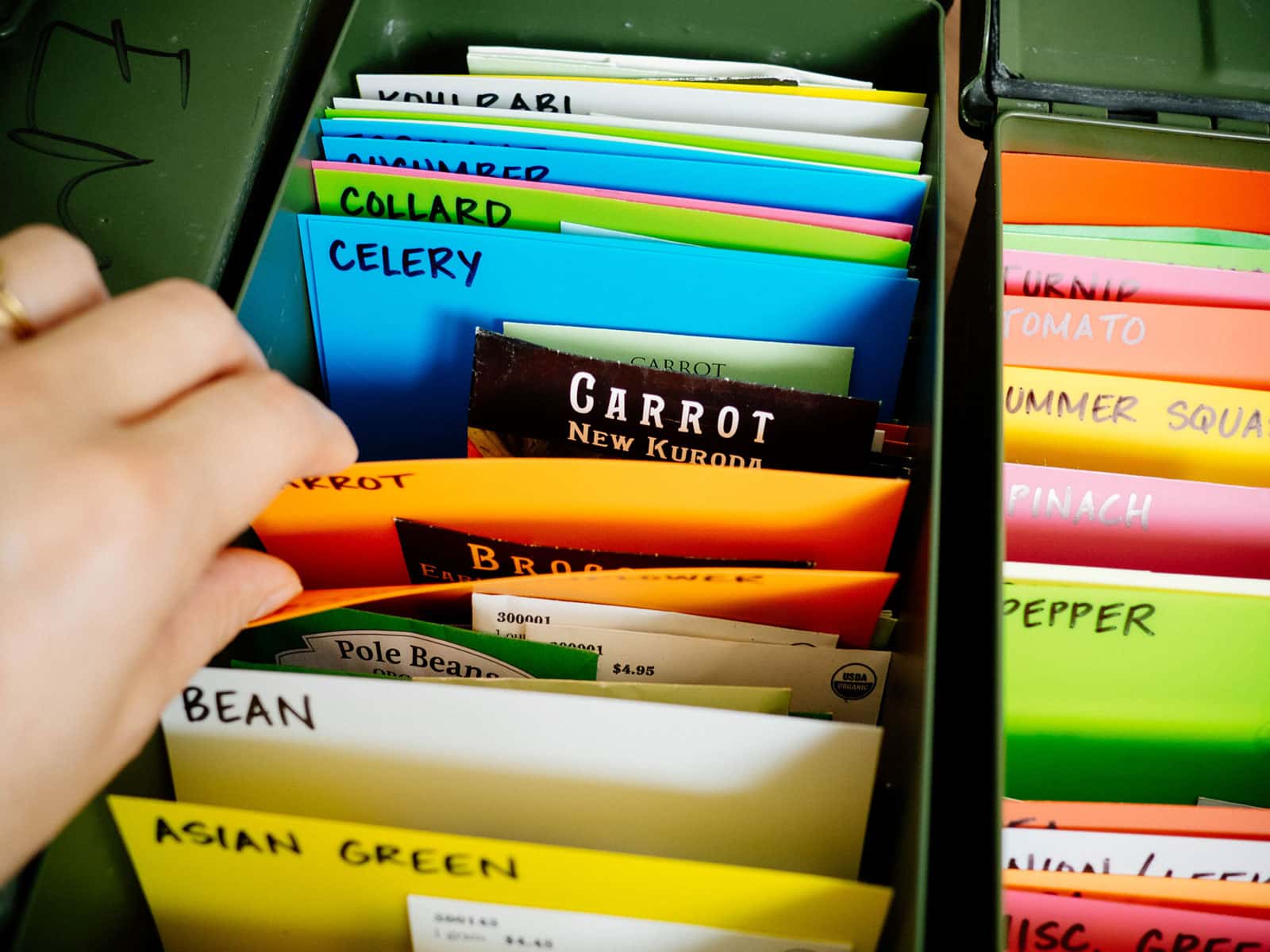
The dividers were made from old plastic files that I cut to size and labeled with a marker. (In my old organization system, I cut up cardboard boxes to make dividers, so there’s no need to get fancy here.)
The third ammo can holds all my herb and flower seeds. The organization is a bit more simple here, in that I only group my packets by herbs, edible flowers, and ornamental flowers (since I don’t have that many seeds for each type of plant).
This works well for me, and I can easily add more ammo cans as my seed collection expands. Each can holds about 75 to 100-plus packets, depending on how bulky they are. Alphabetizing my seeds has actually helped me reduce the number of cans I use, since I’ll fill them to capacity before I add another can.
Do you want to use this same system for your own seeds?
Because it’s such a game-changer, I decided to turn my seed inventory spreadsheet into a template you can copy and use!
You can access the exact Airtable spreadsheet I created and work with it as is, or use it as a starting point to make a more robust system (if you want to track additional parameters like annual/perennial or spring/fall seeds, for example).
If you’ve never worked with Airtable before, it’s pretty intuitive (even if you’re not great with Excel). It’s also 100 percent free to use—you just have to set up an account. (They do have paid plans for extra features, but I’m still on the free plan and you won’t need to upgrade to use my seed inventory “base,” as Airtable calls its spreadsheets.)
If you’d rather not use a new platform, no worries—my seed inventory spreadsheets are also available in Google Sheets format!
You’ll get all the same dropdown selections as with Airtable, and can easily filter each column to group the data however you want.
I’m offering both versions (Airtable and Google Sheets) for only $9.
Digitize your seed inventory
Get my seed inventory templates
Keep track of the seeds you have, how much is left, and how old they are, and access your inventory from anywhere. You’ll get my custom templates in Airtable and Google Sheets formats—just copy them to your own account.
You’ll get access to both versions, along with instructions on how to copy the templates to your own Airtable or Google account. Once you have them, you’re free to edit the spreadsheets (for personal use) to fit your needs.
Note: My seed inventory templates will NOT work in Excel.
Will this work for smaller seed collections?
Absolutely. Even if I only had 50 seed packets to keep track of, it’s really nice not needing to pull out my storage containers just to find out how many pea seeds I have left or what year I bought that ‘Fordhook Giant’ Swiss chard.
(Seeds do have a shelf life, and periodically clearing out older seeds can save you time and frustration. Simply click on the “Packet Date” view in Airtable, or filter your Google Sheet to sort by the “Packed For” date, and you’ll immediately know what your oldest seeds are.)
I hope you find this resource as useful as I have!
Digitize your seed inventory
Get my seed inventory templates
Keep track of the seeds you have, how much is left, and how old they are, and access your inventory from anywhere. You’ll get my custom templates in Airtable and Google Sheets formats—just copy them to your own account.


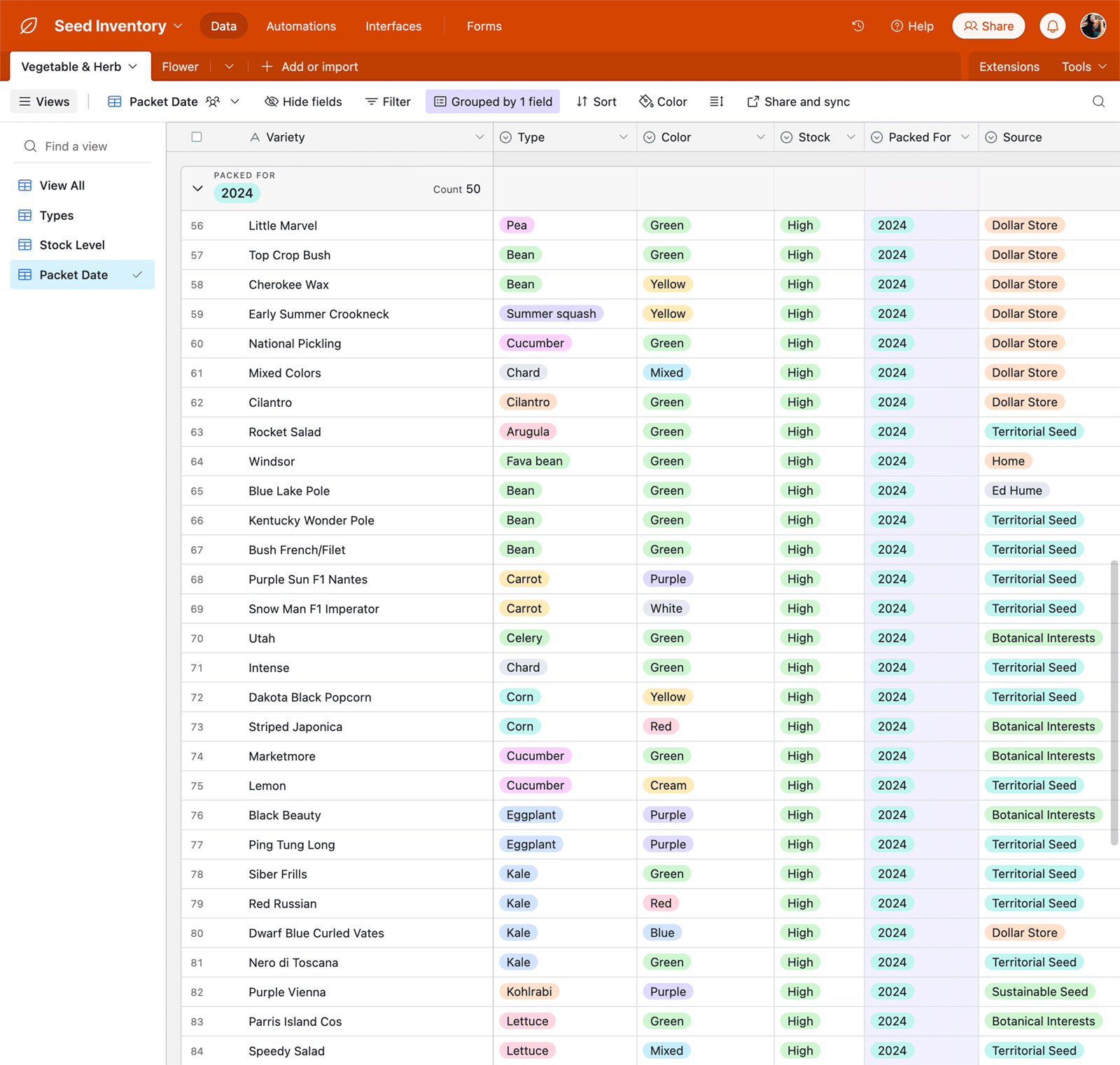
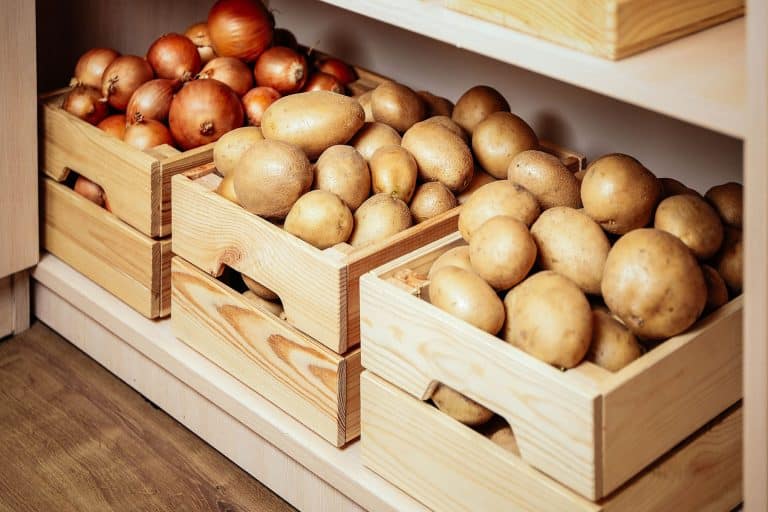

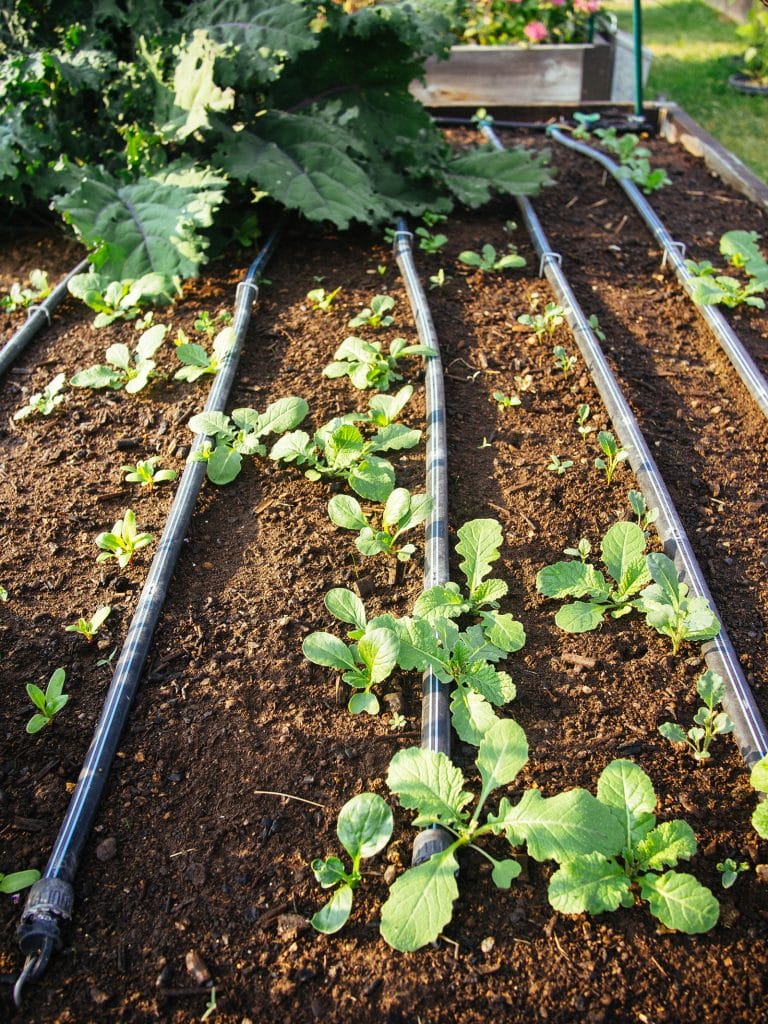
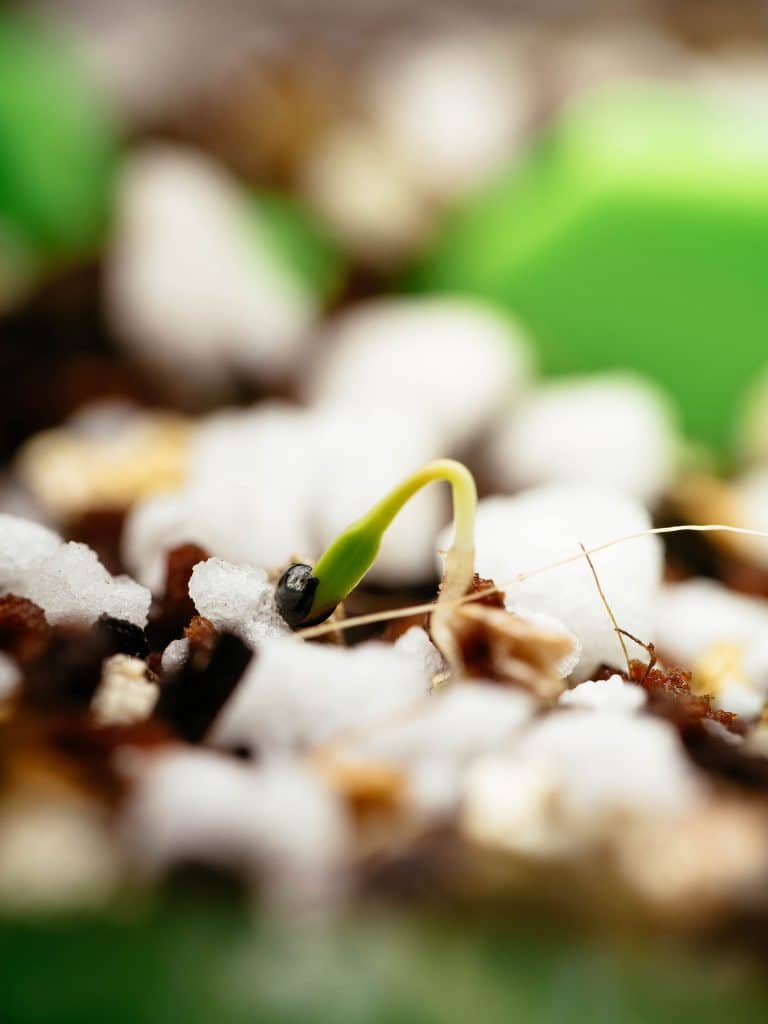


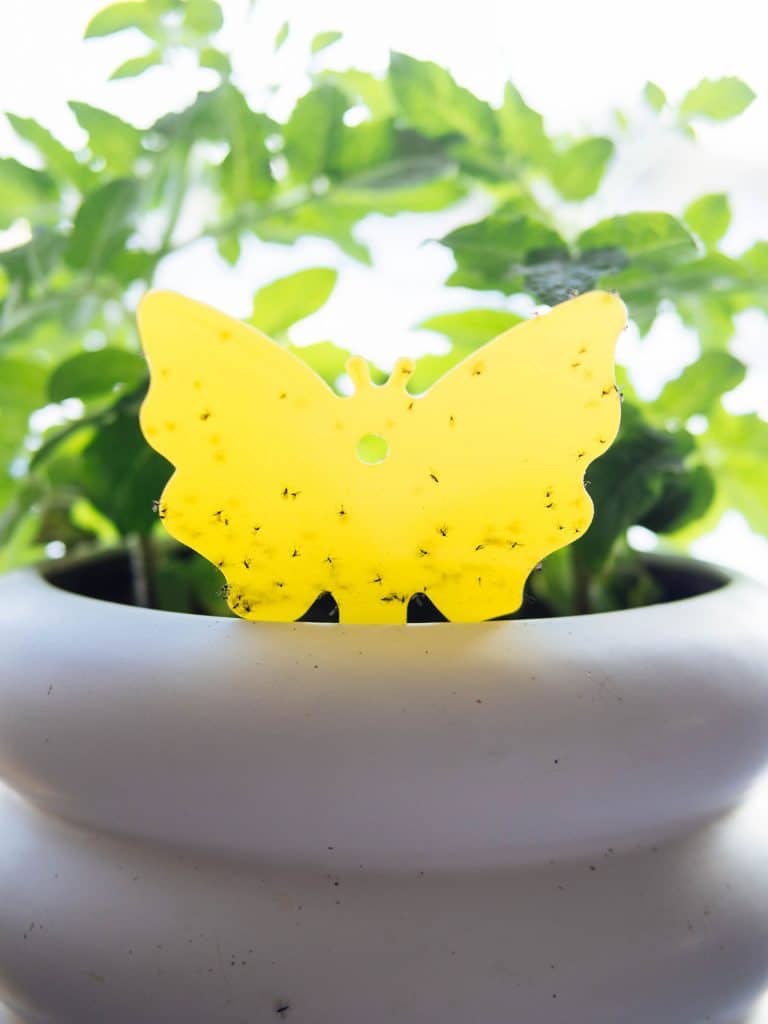
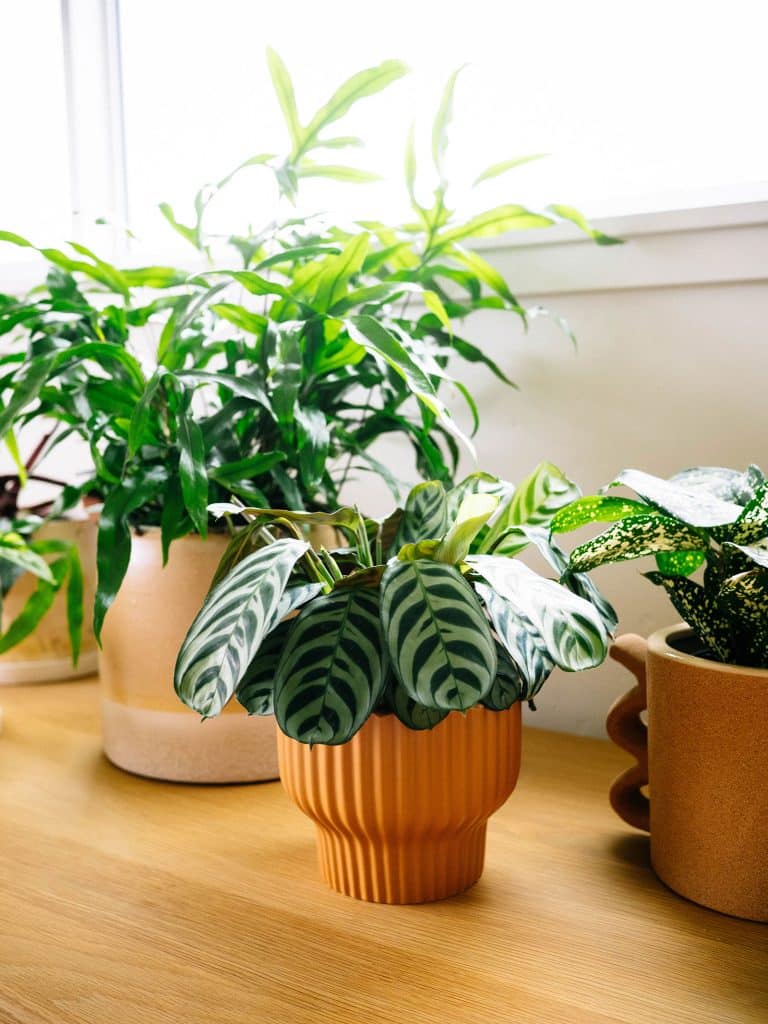
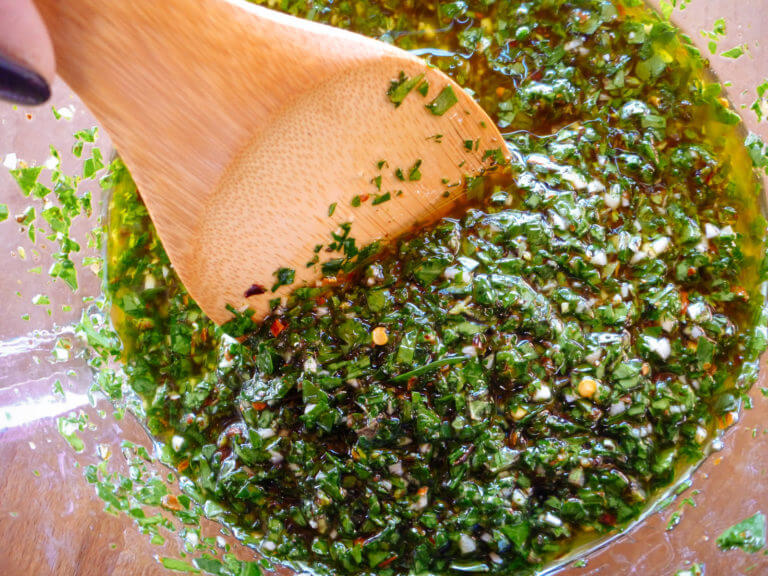
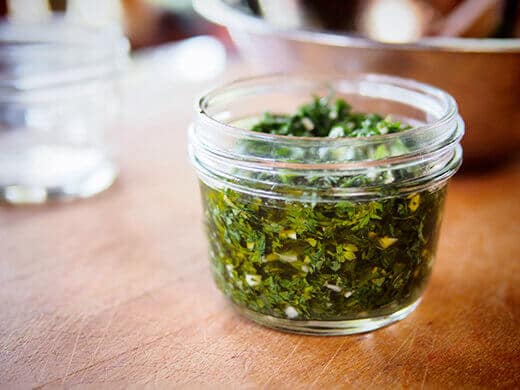
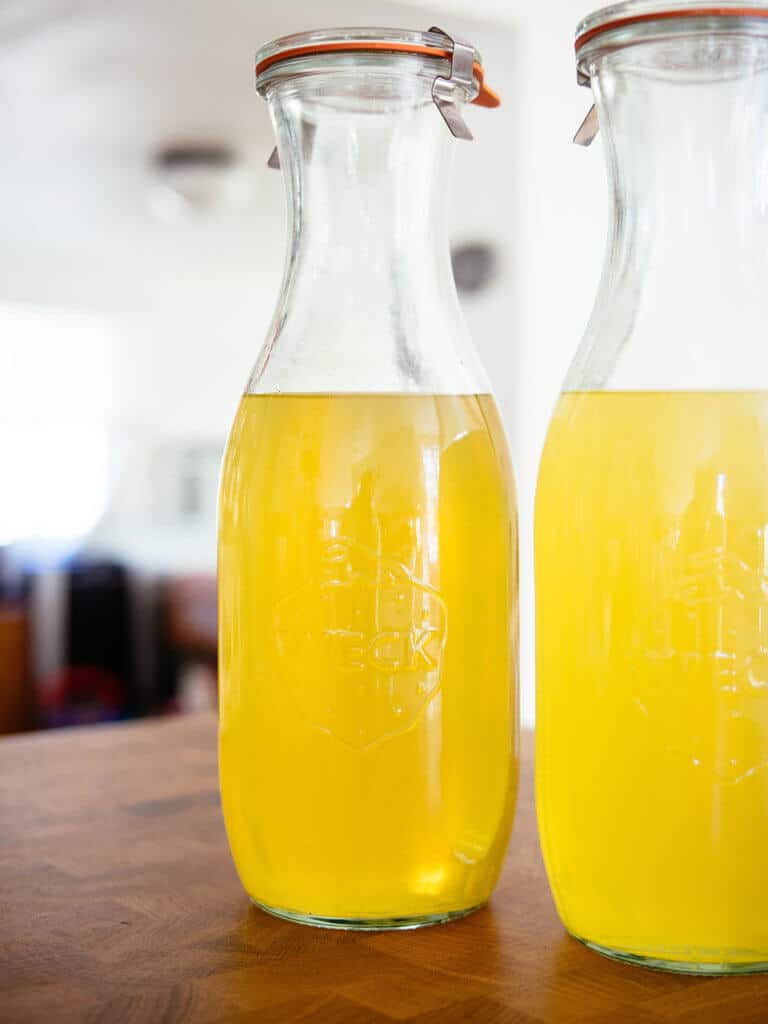
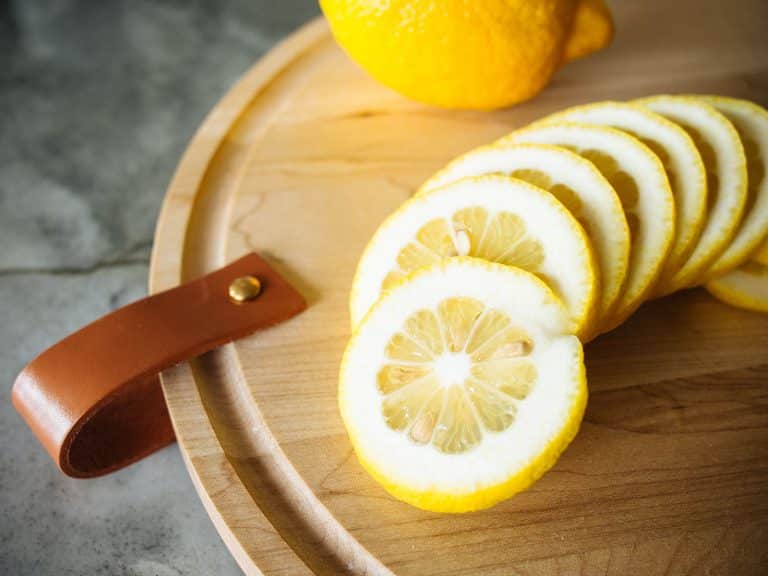

Hi. I use FileMaker Pro as my seed database. Over the decades I added seed viability and pollination data, details about the variety’s performance and basic info regarding soil preference, tolerated and optimal germination temperature, germination test and date (when it is supplied, and several more general fields to account for special features and comments based on experience. I tried to copy a pdf file of one entry below, but just the text without formatting reproduced. I’ll send the PDF to anyone who requests it.
BROCCOLI, heading Crop Variety Umpqua vegetable
Inventory few Date 3/10/25
2021
When
ordered RCD 2021
Plant small flat in mini greenhouse (almost enough for 2025) get more seed 3/8/24 Day
Comments Yield: 55 lb/100 sq. ft.
Supplier JSS
Plant Again small flat in mini greenhous 3/10/25
Day 2
_And_Again
Day 3
Transplant
Hort Info For summer, fall, winter production. Good cold tolerance. excellent side shoots
Daz mature 60 Daz Germinate 10-14
Rec Spacing in Row 18″ Bet Rows 18″
Rec Planting Depth .5″
Once More Day 4
germ ° 65-70° F 70-75° 77 opt
D
Source
Codes 2024
size Thin to 18″
Type
Pretreat
SUN SHADE sun to light shade Water Germ %
pH 6.5
Life Biennial
Uses
Taxonomy Brassicaceae: Brassica oleracea var italica
Inoculant req
SN 102
Cost
Nominal viability: 4 (3) (5) yrs. 200=ideal number of seeds to avoid inbreeding depression
according to SSE. Hybrid: has more natural viability but does not breed true. Insect
pollinated.
Seed Saving
Nutrition info 3% protein, diverse minerals & vitamins at high levels (C can exceed 100 mg)
More common names
Amount ordered
Cat pg
Stored at:
moderate
Soil rich,
Caption
Past sources
utility/
footnotes
Last verified
date
Plant